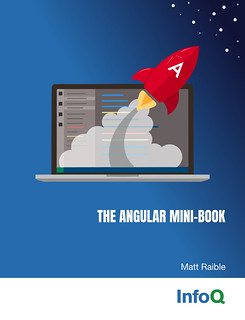This evening I attended the Denver Rails User Group (a.k.a. DeRailed) to hear a presentation by Marty Haught. It was titled "Lean Teams: Doing more with less" and the following are my notes from the event.
Today's talk is about "Rocking with Ramen" - a.k.a. working with less funds to make great things. Lean comes from the manufacturing world in that you should Add Nothing but Value. The most important thing you should do is add business value.
The Seven Wasteful Sins for manufacturing are:
- Overproduction
- Inventory
- Extra Processing Steps
- Motion
- Defects
- Waiting
- Transportation
The key to fighting overproduction in software is to trim features to those that achieve the greatest value. You should do "the simplest thing that could possibly work" and delay commitment as long as you can because YAGNI.
A minimum viable product is a starting place for validated learning with the least amount of effort. It should be embarrassing. Early adopters see the potential. Rails Rumble and Startup Weekend are good examples of promoting this type of development.
Unused and useless features are best solved by feedback-driven development. This is a process for validating value and creating software that people use. The end result is that you create software that people use and you're able to pivot your plan as you learn. The benefit of this is you stay humble and you don't drink the Kool-Aid (e.g. VC's tell you you're going to be the next Twitter).
The first part of feedback is "Pirate Metrics" by Dave McClure. The main things to track are acquisition, activation, retention, referral and revenue (AARRRR!). The main things you should gather from metrics is they're actionable and should help you make decisions. Vanity metrics like hits-per-month and such should be ignored.
Other feedback options include net promoter score (popup question to ask if users would recommend to a friend), feedback form (make it easy for users to tell you what you think about your product), A/B testing, and usability testing.
The final point is that it's OK to remove features.
To reduce extra processing and waiting, you should implement "Kanban". It's a pull-based system for a continuous flow of work and can be used in software projects to manage/schedule work for cross functional teams. It's an expression of just-in-time and has an emphasis on flow. It's all about getting across the board as fast as possible. In agile development, this is often expressed as a card-based system on a wall in the same room as your development team. Things can only move from the left-to-right as there is space for them. Marty is showing a screenshot of a "Zen" tool he uses on his projects. It has 3 columns (Definition, Work and Verification) from left-to-right that allows you to easily move stuff.
The most important thing about Kanban is it helps to eliminate constraints. The Zen tool only allows a certain amount of items in the "Work" column and it visually communicates blocked items by moving them to the top and highlighting them with a red border. The Zen tool that Marty is showing looks similar to Rally, but is much more visually appealing.
The benefits of Kanban include:
- simple, less process
- less inventory of requirements/stories
- limit work in progress, maximize throughput
- less time in meetings
- more naturally represents story lifecycle
- more easily spot bottlenecks
- estimate only if it adds value
Kanban promotes tracking how long it takes for a story get across the board and into production vs. tracking velocity of a team.
On my current project, we use Rally, a small team and have two week iterations. Because the things that Marty is talking about seem to be things we're already doing, I asked him how Kanban differs from Scrum with small teams. He explained that this biggest difference is Kanban is most useful when you're pushing things to production with each iteration.
The most controversial practice that Marty promotes is Continuous Deployment. This is the automated deployment of code to production. It includes automated testing and continuous integration, simple deployment/rollback scripts, a successful CI build triggers deployment, and there's real-time alerts in production. When shit goes wrong, you should use the "five whys" to perform root cause analysis. Marty admits that this is only a good idea when there's a high-level of trust in your development team and lots of tests to prove nothing is broken.
The benefits of continuous deployment is there's a lower story cycle time, you eliminate waste in deploying code, you deliver features/bugs fixes faster and you find integration issues quicker and in isolation. It's also a great way to promote not checking in shitty code.
The skeptics think this is a bad idea because 1) it's scary, 2) they believe it causes lower quality and 3) it causes more issues in production. The good news is you can still control production deployments with your source control system (e.g. branches and such). More than anything, it forces you to have a high quality continuous integration system that acts as the gatekeeper for what goes to production.
You can learn more about topics Marty covered in this talk at the following sites:
If you're lucky enough to be attending Aloha on Rails, Marty will be presenting there. I recommend you attend his talk if you're trying to get stuff done quickly and get it into production even quicker. His techniques seem to be invaluable for developers that are trying to maximize their efficiency and reduce the time it takes to get their code into production.







